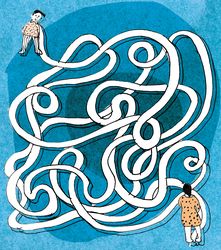News cycles are short-lived, fast-spinning wheels of information. Here today, and poof gone tomorrow. Now, we are caught up in the drama of Gautam Adani’s battle with Hindenburg Research and its political tremors. So, it is hard to feel there is any other headline worth tracking.
But, I draw your attention back to an issue, which though almost irrelevant in implication compared with the Adani saga, was covered with as much breathless urgency—the infamous Air India #PeeGate.
A month later, I have to cautiously wonder if Shankar Mishra was a victim of a media lynch mob. I think we still do not know the facts, for certain. I was among those who was scathing about the man, I then called, the ‘urinator’. As a feminist, it is obviously my instinct to believe women. Even now, I cannot for the life of me answer why anyone, elderly or young, would single out a fellow passenger to blame, if he had not actually done what she says he has. When the story first broke, I even said—apart from the unruliness—it seemed like a case of sexual harassment to me.
But, as time went on and I started doing deeper reporting on the story, some things stopped making sense.
Ina Bannerjee, in her 80s, was seated next to the complainant in the aisle seat. We tracked her down and she was clear that she had neither seen Mishra pee on the alleged victim nor experienced anything herself. All she had seen was the crew cleaning the seat next to her. Her testimony was one of the reasons why Mishra got bail—the judge pointed out that there were contradictions between the police case and what other witnesses recorded.
To discuss the mechanics of #PeeGate feels bizarre, but is necessary. How does any person, no matter how drunk, jump over the passenger asleep in the aisle to urinate on the passenger in the window seat, without them waking up or being urinated on?
The only other “witness” that we know of is the passenger seated next to Mishra—a US-based doctor called Dr Sugata Bhattacharjee. His initial comments to journalists, including to me, became the media basis to further build the case against Mishra. Bhattacharjee recounted how Mishra had too much to drink, how he found the complainant in the galley, distraught at her soiled clothes, and how Mishra purportedly whispered to him, “Bro, I think, I am in trouble.”
The Air India crew have a different take on Bhattacharjee. Crew logs claim Bhattacharjee—whose display picture shows him shaking hands with various US presidents—asked for an upgrade to first class on boarding. That he was denied one, they claim, explains his “loud” behaviour later.
If Mishra is innocent, why didn’t he assert that, instead of apologising and paying for dry-clean—money the complainant later returned. A written submission by crew member Neeta Kararia says that when Mishra was confronted, he was stunned and said he could not imagine doing such a thing.
The internal inquiry panel has not helped the credibility of the process. It got the configuration of the 777 aircraft wrong, referencing a 9B seat that does not even exist in business class.
This is not to say that Air India did not mishandle matters. The pilot, asleep on his rest-shift, should have been woken; he should have upgraded the complainant to first class irrespective and informed the international operations control centre immediately. The case should have been handed over to the police on arrival for them to determine truth from fiction. The management instinct to gag the crew was also a self-goal. But something has shifted internally as well, the Tatas have backed their pilot against the suspension of his license.
Suppose this case collapses in court, would we in the media think we handled the story appropriately?
editor@theweek.in


